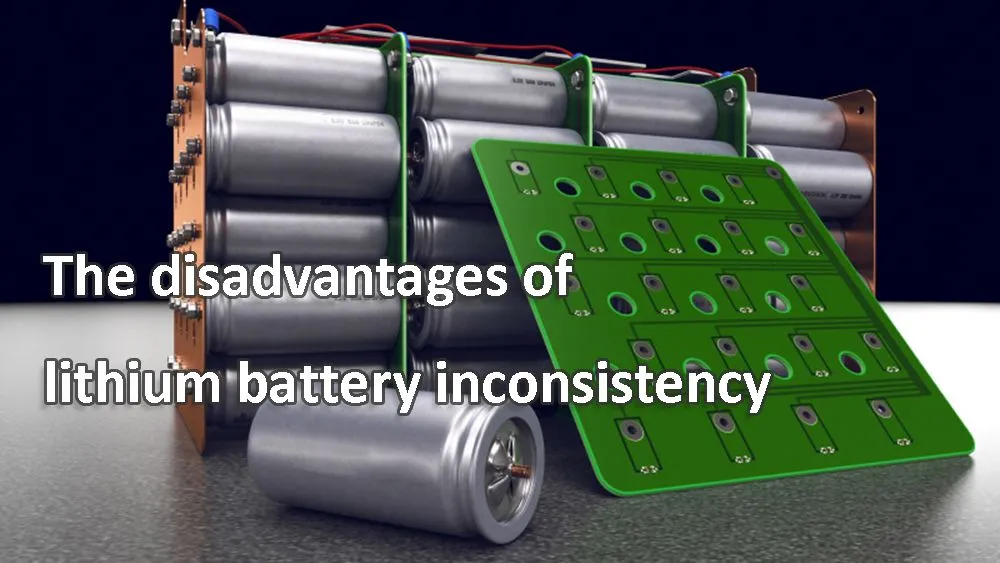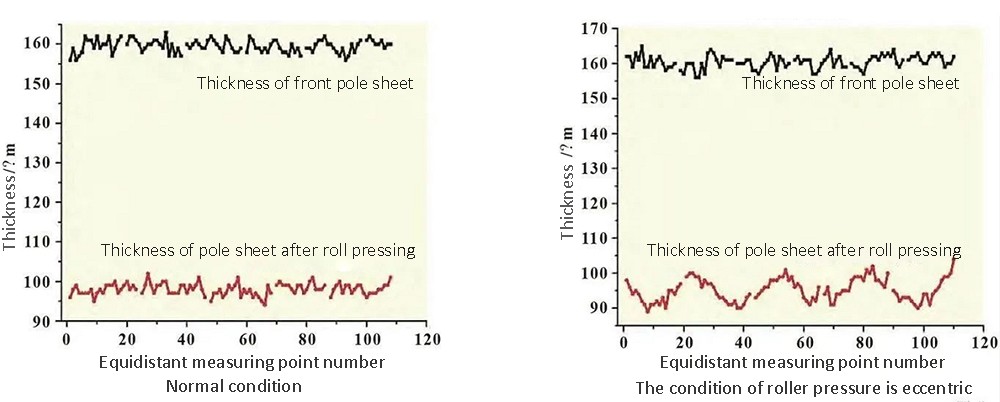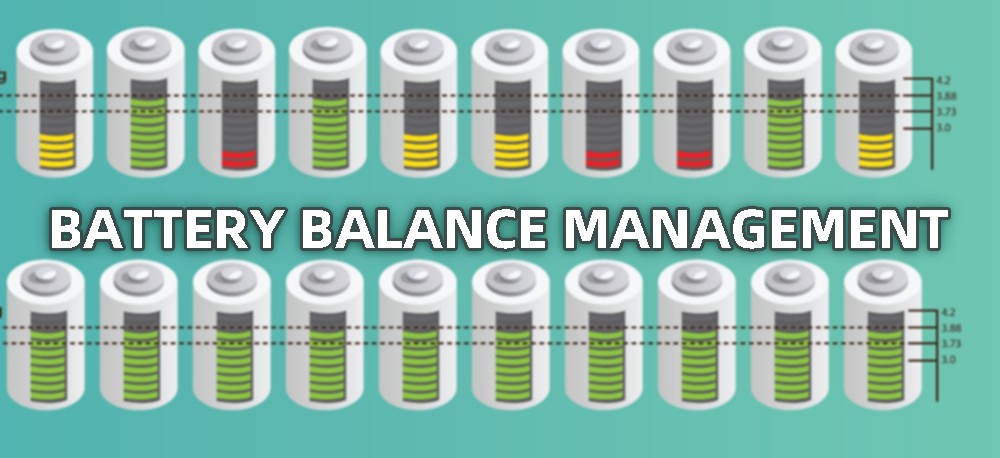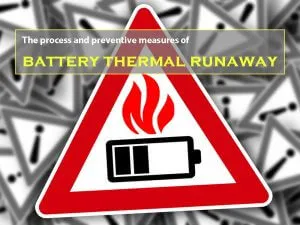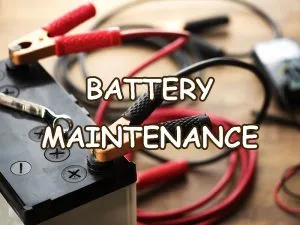Influencing factors and improvement measures of lithium battery consistency

Odm lithium ion battery pack manufacturer needs to start from the production process and study the influence of the main process and its production equipment on the consistency of the battery. In this article analyzes the factors affecting the consistency of lithium-ion batteries and seven improvement measures.
Disadvantages of lithium battery inconsistency
The difference in battery performance is mainly reflected in battery capacity, internal resistance, voltage, etc.; After the cells are grouped, during the charging process, the cells with small capacity will be fully charged first, and the cells with large capacity will continue to charge, which will cause the cells with small capacity to be overcharged;
During the overcharging process, lithium ions will precipitate dendrite lithium on the surface of the graphite negative electrode. Long-term overcharging may cause metallic lithium to grow vertically from the graphite surface and pierce the diaphragm, causing short circuit of the battery cell or even fire and explosion;
During the discharge process, the batteries with small capacity will be fully discharged first, but the other batteries have not been fully discharged at this time. If you want all the batteries to discharge the remaining power, the batteries with low capacity will inevitably be over-discharged, and long-term over-discharge will affect the service life of the entire module.
Similarly, in the series-parallel circuit, the difference in the internal resistance of the single cells will also reflect the problems of fast charging, large heat generation, and different discharge rates of some batteries during the charging and discharging process. Eventually, it will lead to capacity attenuation, life attenuation and even safety problems of the battery module. Therefore, it is necessary to study the relevant influencing factors of the consistency of lithium-ion batteries and the corresponding improvement measures.
Main factors affecting the consistency of lithium batteries
The manufacturing process of lithium-ion batteries is complicated and there are many processes; these processes can be divided into three sections: pole piece production, battery cell production and battery assembly. Before understanding the factors affecting the consistency of lithium batteries, it is necessary to first understand the manufacturing process of lithium-ion batteries.
Each manufacturing process will have an impact on the consistency of lithium batteries. Among them, production links such as mixing, coating, and rolling are difficult to control and are most likely to cause deviations. There are differences in the performance of the finished battery, which has a great impact on the consistency.
Mixing
Mixing, including batching and stirring, is one of the most critical processes affecting the performance of lithium batteries. Because the selection, design, processing, reasonable proportioning and mixing process of materials are crucial to the performance of the finished product, some manufacturers believe that their impact on battery quality in the entire production process is greater than 30%.
Calculate the actual amount of each material according to the ratio of solid content, active material, conductive agent and binder, and then add in order of deionized water, binder, conductive agent, and active material. After a certain period of mixing and stirring under vacuum conditions, the dispersion is uniform and no air bubbles are generated, and the coating is carried out after adjustment to a suitable viscosity.
Coating
During the coating process:
1) If the temperature is too high, it will easily cause the pole piece to crack, and if the temperature is low, the pole piece will not be completely dry;
2) The surface density is small, the nominal capacity of the battery cannot be reached, and the cycle performance is poor. If the surface density is high, while the material is wasted, lithium dendrites may be formed due to excessive positive electrodes, causing safety hazards;
3) If the coating size is too small or too large, it may lead to unsafe charging and discharging process and short circuit;
4) Misalignment between the second surface and the first surface may also cause the negative electrode to not completely enclose the positive electrode. Therefore, the quality and consistency of the coating process have a major impact on the consistency of lithium battery performance.
There are many factors that affect the coating quality, such as: the manufacturing accuracy of the coating head, the stability of the equipment operation, the control of the dynamic tension during the movement, the air volume and pressure during the drying process, and the control of the temperature curve.
Rolling
The purpose of rolling is to make the combination of active material and foil more dense and uniform in thickness. The size of the rolling compaction density directly affects the performance and consistency of the battery:
1) Excessive compaction density makes the contact between particles too close, and the electronic conductivity is enhanced. However, the ion movement channel is reduced or blocked, which is not conducive to the capacity development, the polarization increases during the discharge process, the voltage drops, and the capacity decreases;
2) The compaction density is too small, the distance between particles is large, there are many ion channels, and the electrolyte absorbs a large amount, which is conducive to ion movement, but due to the small contact area between particles, it is not conducive to electronic conduction, and the discharge polarization increases.
In short, the initial capacity, internal resistance, and capacity cycle performance of lithium batteries with different compaction densities are completely inconsistent, and small differences in compaction densities will lead to large inconsistencies in battery performance. Therefore, rolling must ensure uniform thickness of the pole piece to ensure consistent compaction density and produce lithium batteries with consistent performance. Controlling the compaction density is mainly achieved by controlling the rolling thickness.
The quality of rolling equipment mainly depends on factors such as unloaded roll gap, rolling mill stiffness, rolling piece inlet thickness, rolling piece deformation resistance, bearing oil film thickness, and roll eccentricity; In addition, when the roll is eccentric in the rolling machine, the thickness of the electrode sheet after rolling will fluctuate up to ±7μm, which will seriously affect the consistency of the battery.
Effect of roller pressure on thickness of polar plate
Battery consistency improvement measures
1. Dimensions of production process
Control the consistency of various raw materials of the battery – monitor the rheology and viscosity of the slurry well, and do not leave the slurry for a long time to ensure that the rheology of the slurry is the same when coating; Do a good job of monitoring the coating parameters, especially the lithium iron phosphate slurry. Due to the fine particles of lithium iron phosphate, the processing performance of the slurry is poor, so care should be taken to slow down the speed of the coating machine during coating;
Detect the appearance of the pole piece, and remove the defective pole piece; weigh the pole piece; compare the poor quality of the battery before and after liquid injection; Pay attention to temperature and humidity control in coating, chemical formation and other links; formulate standards for various raw materials, and inspect and store raw materials in strict accordance with the standards;
Strict Statistical Process Control (SPC) is carried out on the process to ensure that each process is within the specified tolerance range; to ensure that the process capability index is achieved so that it follows the normal distribution of production parameters.
2. Matching process dimensions
Ensure that the battery pack uses batteries of uniform specifications and models, and ensure the quality of the batteries, especially the consistency of the initial voltage. The screening conditions are: voltage, internal resistance, and battery formation data; There are many consistency evaluation methods, the most commonly used are the range coefficient method, the standard deviation coefficient method and the threshold method.
Combined with cluster analysis, the shape, distance, and area of the battery charge and discharge curve formed by each detection point within the set time interval are used for scientific classification to determine the consistency of the battery. On the basis of the capacity or voltage threshold, the shape of the charge and discharge curve, the distance between the curves, the area enclosed by the curve, etc. are calculated, and the parameters that can reflect the consistency of the curve are selected for judgment.
In the process of charging and discharging, the curves are closer, the relative distance is smaller, the area enclosed by the curve is smaller, and the difference between the groups is small, so as to achieve the optimal consistent matching.
3. Battery balance management
From the perspective of the battery management system, grasp the development law of the inconsistency of single cells in the battery pack, and adjust or replace the battery with extreme parameters in time to ensure that the inconsistency of the battery pack parameters does not increase with time;
Avoid overcharging the battery and try to prevent deep discharge of the battery. Ensure a good use environment for the battery pack, try to ensure a constant temperature, reduce vibration, and ensure that water, dust, etc. pollute the battery pole. At the same time, from the perspective of energy management and strategy, a practical battery pack energy management and equalization system is introduced to formulate a reasonable battery equalization strategy to actively intervene and reduce battery inconsistency. If you want to know BMS related manufacturers, Here are top 10 battery management system suppliers.
4. Battery thermal management
During the use of the battery, the difference in internal resistance, battery layout and other factors will cause the difference in its own temperature and ambient temperature during the charging and discharging process, which will directly lead to the difference in its output performance.
The role of battery thermal management is to keep the operating temperature of the battery pack within the optimal operating temperature range of the battery, to ensure the consistency of the temperature conditions between the batteries, and thus to ensure the consistency of the battery operating parameters.
5. Control strategy
In terms of energy management, when the output power is allowed, the battery discharge depth should be minimized. Lithium-ion cells become less consistent under deep discharge conditions and the life of the battery pack is reduced. Try to prevent the battery from deep discharge and at the same time avoid overcharging the battery.
A system equipped with an equalizing circuit can prevent overcharging of individual batteries, properly reduce the end-of-charge voltage, and prolong the cycle life of the battery pack.
6. Equipment
By selecting high-automation, high-precision, high-stability and intelligent equipment to ensure the consistency of single cells, reduce the differences between different cells and the influence of human factors. For example: In the automatic slurry feeding system, it is necessary to pay attention to prevent the stratification of the slurry in the storage tank, monitor the slurry level in the transition cylinder, the stability of the screw pump, and whether the blockage of the filter tank is cleaned in time, etc.
Choose coating equipment with high-precision coating heads, stable operation, excellent dynamic tension control, drying air volume, air pressure, and temperature curve control; Use X/β rays to monitor the density of the coated surface online, measure the temperature of the surface of the pole piece, and monitor the flow, viscosity and temperature online.
7. Other
During the daily use and maintenance process, the battery with a low capacity in the measurement is charged separately for maintenance to restore its performance; the battery pack is charged for maintenance with a small current at regular intervals to promote the balance and performance recovery of the battery pack itself;
In terms of the use environment, to ensure a good use environment and consistent conditions for the battery pack, this requires a battery management system and a vehicle controller to achieve.
Conclusion
The consistency of lithium batteries has a very important impact on battery product capacity compliance, cycle life and even safety issues; Consistency problems are affected by multiple factors, which are transitive and cumulative. Although inconsistency cannot be completely eliminated,
However, it can be improved from the aspects of production process dimension, assembly process dimension, battery balance management, thermal management, control strategy, production equipment, etc. Battery production equipment plays a decisive role in the quality of battery product manufacturing. The higher the quality requirements, strict consistency requirements, and high safety batteries, the more important the production equipment is.
Main lithium ion manufacturers can only promote the development of the battery industry through continuous equipment technology innovation, which is reflected in the equipment carrying technology and quality at the micro level, and technology and quality lead the direction of equipment.


